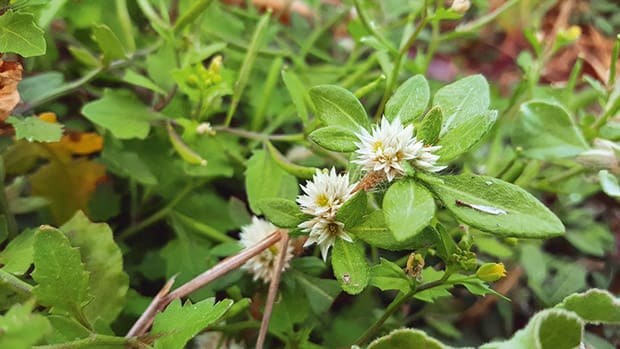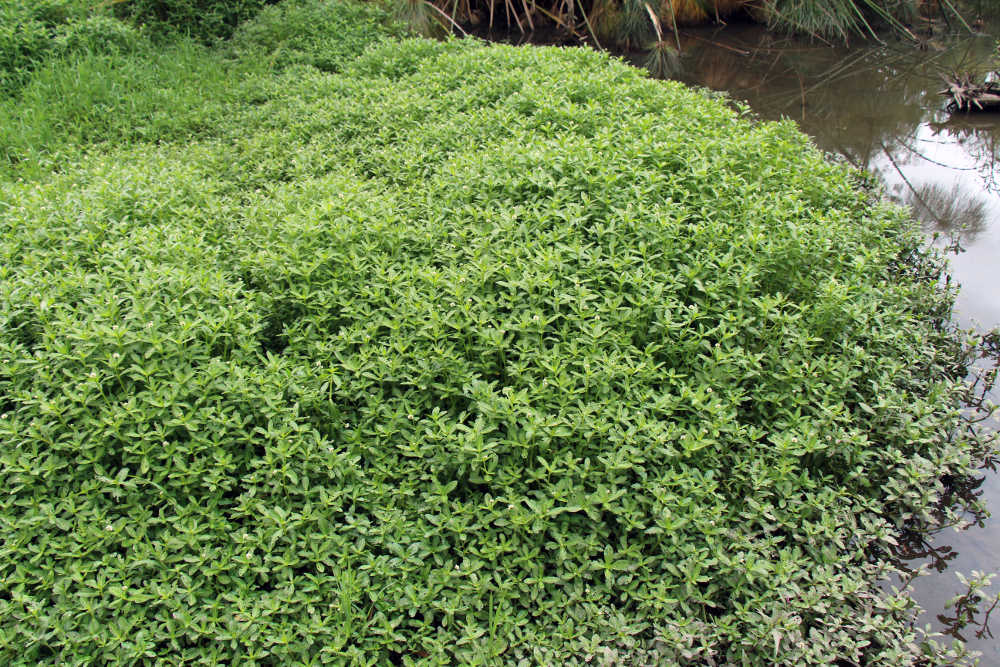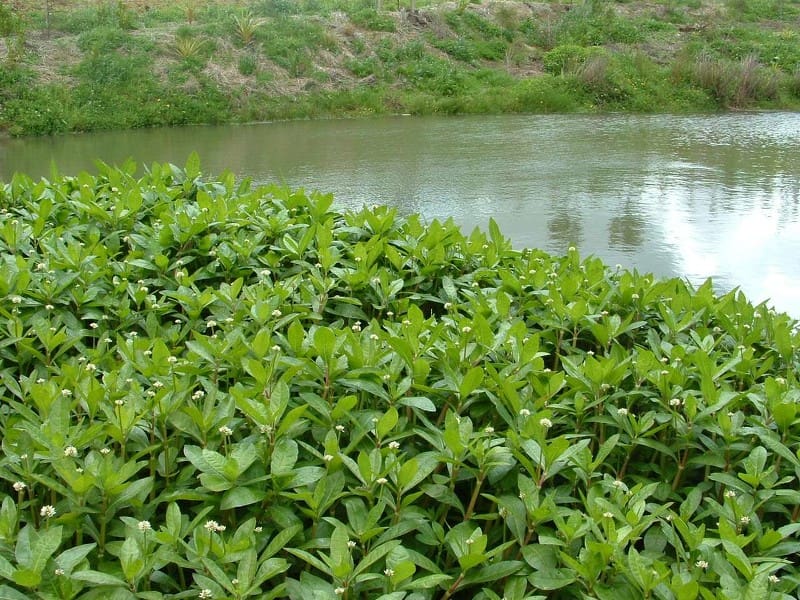Curious about keeping your local waterways pristine? “How To Prevent Alligator Weed From Spreading In Waterways” is here to help you tackle this invasive plant head-on. You’ll discover practical steps and effective strategies to stop alligator weed from taking over your favorite lakes, rivers, and ponds. Whether you’re an avid angler, a concerned citizen, or just love spending time by the water, this guide will equip you with the knowledge you need to protect and preserve your cherished aquatic environments.
How To Prevent Alligator Weed From Spreading In Waterways
Have you ever noticed clumps of dense green vegetation clogging up local waterways and wondered what they were? Chances are, you’ve encountered Alligator Weed. This invasive plant species poses a significant threat to aquatic ecosystems by rapidly spreading and choking out native vegetation. In this article, we’ll dive deep into understanding Alligator Weed and how you can take effective steps to prevent its spread.

Understanding Alligator Weed
Alligator Weed (Alternanthera philoxeroides) can be quite a menace to local ecosystems. Originating from South America, it has found its way across the globe, colonizing waterways at an alarming rate.
What Is Alligator Weed?
Alligator Weed is a perennial herb that thrives both on land and water. It features:
- Leaves: Long and elliptical, arranged opposite each other on the stem.
- Flowers: Small and white, growing in clusters.
- Stems: Hollow and sprawling, allowing it to float on water surfaces.
Why Is It a Problem?
Alligator Weed’s dense mats can outcompete native plants, reduce biodiversity, and alter water flows. This can lead to a plethora of issues, such as:
- Blocked water channels
- Decreased water quality
- Restricted light penetration affecting aquatic life
- Habitat disruption for native species
Methods to Prevent the Spread of Alligator Weed
Preventing the spread of this invasive species involves a multi-faceted approach that includes physical, chemical, and biological methods. Here are some effective strategies:
Physical Control
Physical control methods are usually the first line of defense and can be highly effective when done correctly.
Manual Removal
Manual removal involves physically uprooting Alligator Weed from affected areas. It’s labor-intensive but effective for small infestations.
- Tools Needed: Gloves, hand tools, and disposal bags
- Steps: Pull the plants by the roots and ensure proper disposal to prevent regrowth.
Mechanical Removal
For larger infestations, mechanical equipment can be employed.
- Equipment: Aquatic weed harvesters, dredges
- Benefits: Efficient for extensive coverage
- Caution: Ensure that all plant fragments are removed to prevent regrowth.
Chemical Control
Chemical control can provide effective results, particularly for large and inaccessible infestations. It should be used carefully to minimize environmental impact.
Herbicides
Select herbicides specifically designed for aquatic use are effective against Alligator Weed.
- Recommended Herbicides: Glyphosate, 2,4-D
- Application Methods: Spraying, injection
- Timing: Apply during the growth phase for optimum results.
Note: Always follow local regulations and guidelines when using herbicides.
Biological Control
Biological control uses natural predators or diseases to manage Alligator Weed populations. While slower, it’s a sustainable option.
Natural Predators
Introducing natural predators can effectively curb the growth of Alligator Weed.
- Biocontrol Agents: Agasicles hygrophila (Alligator Weed flea beetle), Arcola malloi (Alligator Weed stem borer)
- Advantages: Long-term and environmentally friendly solution.
Implementing a Monitoring Plan
Effective prevention requires consistent monitoring and early intervention.
Regular Inspections
Frequent inspections can help detect early infestations.
Inspection Schedule
- Monthly Inspections: For high-risk areas
- Quarterly Inspections: For low-risk areas
Reporting and Record-Keeping
Keeping records helps in tracking the spread and effectiveness of control measures.
- What to Record: Infestation locations, control measures applied, results
- Reporting: Inform local authorities of significant infestations for coordinated action
Community Involvement
Involving the community can amplify prevention efforts.
Educational Programs
Raising awareness about Alligator Weed and its impacts can help in early detection and prevention.
Topics to Cover
- Identification: How to recognize Alligator Weed
- Impact: Environmental and economic effects
- Control: Steps individuals can take
Volunteer Programs
Organize community clean-up events to manually remove Alligator Weed.
- Benefits: Enhances community engagement and awareness
- Tools Provided: Gloves, disposal bags, training

Best Practices for Disposal
Proper disposal of removed Alligator Weed is crucial to preventing regrowth.
Methods
Here are some recommended disposal methods:
- Drying: Spread the weeds on a tarp in the sun until they dry out completely.
- Burning: If allowed by local regulations
- Bagging and Landfill: Place in sealed disposal bags and take to a landfill.
Precautions
- Transport: Ensure plant fragments do not escape during transport.
- Regulations: Always follow local waste disposal regulations.
Cost and Resource Management
Managing Alligator Weed can be resource-intensive. Budget planning and efficient resource allocation are vital.
Estimated Costs
Below is a rough estimation of costs involved in various control methods:
| Control Method | Estimated Cost ($) | Notes |
|---|---|---|
| Manual Removal | 100 – 500 per day | Depends on labor costs |
| Mechanical Removal | 1,000 – 5,000 per operation | Depends on area size |
| Chemical Control | 50 – 150 per gallon of herbicide | Application costs extra |
| Biological Control | 10,000 – 20,000 for initial setup | Long-term cost-effective |
Resource Allocation
To efficiently manage resources:
- Prioritize High-Risk Areas: Focus on locations with severe infestations
- Consider Multi-Method Approaches: Often, a combination of methods yields the best results

Preventative Measures
Several proactive measures can prevent Alligator Weed from taking hold in the first place.
Buffer Zones
Create buffer zones around water bodies to prevent weed encroachment.
- Vegetation Strips: Plant native grasses and shrubs that resist invasion
- Physical Barriers: Use barriers like silt fences
Water Management
Effective water management can deter Alligator Weed growth.
- Flow Regulation: Maintain steady water flows to prevent stagnation
- Water Quality: Regularly test and maintain water quality
Government and Policy Involvement
Governmental support and policies can significantly bolster prevention efforts.
Regulation
Push for stringent local regulations to control the sale and transport of Alligator Weed.
Funding
Seek grants and funding opportunities to support large-scale control projects.

Conclusion
Dealing with Alligator Weed is no small feat, but by combining physical, chemical, and biological control methods with community involvement and effective monitoring, you can significantly reduce its impact. Remember, early detection and proactive management are crucial. Let’s work together to protect our waterways from this invasive menace!
So, ready to take action and safeguard your local waterways? Let’s get started!